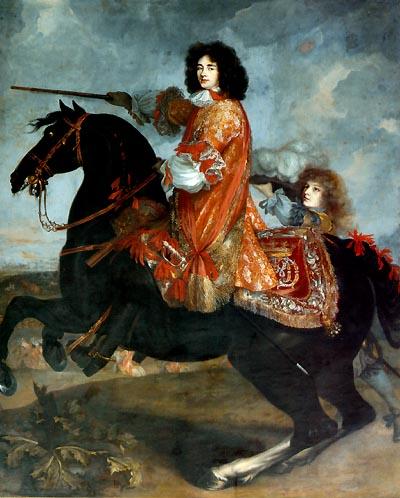I
had a few ideas for most of the bonus rounds, but the
Gambler-Risk-taker was always going to be The Duke of Monmouth. Now I
did consider this figure to be my Curtgeld as well and be the start of
Curt's Nine Years War collection!!! but he's got enough on his plate at
the moment, so he'll be added to my collection, with another figure
being painted for my Curtgeld.
The figure is from Reiver Castings
,who make an excellent dynamic collection of NYW figures, they're not
my first choice of figures to be honest,I do much prefer Warfare minis,
but haven't managed to get any of their figures painted so far??
James Scott, duke of Monmouth, byname (until 1663) James
Fitzroy, or Crofts (born April 9, 1649,
Rotterdam, Netherlands—died July 15, 1685, London, England), claimant to the
English throne who led an unsuccessful rebellion against King James II in 1685.
Although the strikingly handsome Monmouth had the outward bearing of an ideal
monarch, he lacked the intelligence and resolution needed for a determined
struggle for power.
Monmouth was the illegitimate son of King Charles II and
Lucy Walter, who claimed to be the king’s wife; the two, however, had little
contact after 1649. James was born in the Netherlands, where the couple had met
as both sought refuge during the English Civil War; the conflict ended in 1651
with the defeat of Charles’s forces. Lucy and young James moved frequently, and
in 1656 she took him to London. Within months of their arrival, the two were
arrested and briefly imprisoned in the Tower of London by the republican
government. After their release in 1656, Lucy and James journeyed to Flanders.
In 1658 an agent of Charles kidnapped James and took him to Paris, where he was
looked after by Lord William Crofts. Two years later Charles was restored to
the throne, and in 1662 James was returned to England and installed at court as
a favourite of the king. On February 14, 1663, Charles created him duke of
Monmouth, earl of Doncaster, and Baron Scott of Tindale and made him a Knight
of the Garter. On April 20, Monmouth was married to the wealthy Scottish
heiress Anne Scott, countess of Buccleuch; they were created duke and duchess
of Buccleuch, and he took the surname of Scott. Even at this early date some
Englishmen viewed him as a possible successor to Charles. Since Monmouth was a
Protestant, his political opportunities increased when Charles’s brother and
acknowledged heir, James, duke of York, converted to Roman Catholicism about
1668.

Monmouth
was made captain of the king’s guard in 1668 and admitted to the privy
council in 1670. During the Anglo-Dutch War of 1672–74, he commanded
English troops on the European continent. He became captain general of
all the armed forces in England in 1678, and on June 22, 1679, he
triumphed over the Scottish Presbyterian rebels at Bothwell Bridge,
Lanark. Meanwhile, the succession to the throne had become a burning
issue in England, where antipapal hysteria had been aroused by rumours
that the Catholics were plotting to seize power. Charles blocked all
parliamentary attempts to exclude James from the royal inheritance, and
in September 1679 he banished Monmouth from the kingdom. Nevertheless,
the duke quickly returned in defiance of his father and set about
building up a following. In this crisis Monmouth was championed for the
succession by Anthony Ashley Cooper, earl of Shaftesbury, the leader of
the anti-Catholic Whigs in Parliament. In 1682–83 Monmouth became
involved in the Whig conspiracy against Charles and James, known as the
Rye
House Plot. Although pardoned for his part in this enterprise, he was
banished
from court and took refuge in the Netherlands early in 1684.
Upon
the death of Charles II on February 6, 1685, the duke of York acceded to power
as James II. Monmouth landed at Lyme Regis, Dorset, with 82 followers in June
and quickly raised over 4,000 men, but he was unable to rally the gentry to his
rebellion. On July 6 his army of peasantry was totally defeated on the plain of
Sedgemoor, Somerset. He fled but was soon captured and beheaded.


Good story and figure Raymond!
ReplyDeleteThank you Francis??? I'm getting a little worried....all this nice comments from you, are you unwell? do you still miss me?
ReplyDeleteThank you Francis??? I'm getting a little worried....all this nice comments from you, are you unwell? do you still miss me?
ReplyDeleteWhat's with the double comments slackbladder!
DeleteThat's better.
DeleteCould it be the curse the Ladies have charmed him with is finally taking effect?
DeleteNice Work!
ReplyDeleteSo is that the portrait made before or after his death? I have heard that they had to reattach Monmouth's head to his body for a quick official portrait, as they hadn't one in the Royal collection!
ReplyDeleteNice work, Ray!
I've heard that story too. Also apparently the axeman was incompetent. It took at least five hacks to finish the job and Monmouth at one point stood up to give him heck.
DeleteGreat work Ray. And Curt's plate is never too full...watch for him to show up next year with entries of NYW guys in 10mm...
ReplyDeleteI hope he does!!
DeleteNicely painted Ray :)
ReplyDeleteWell done Ray. Great choice of figure and well painted.
ReplyDeleteSuper stuff Ray. I love this period and you've done your subject justice!
ReplyDeleteCheers Millsy!
DeleteOh I bet Curt harbours a passion for the NYE as great as yours Mr Roussell
ReplyDeleteYou cheesy bugger, gimmee this wonderful figure!! ;)
ReplyDeleteSeriously, lovely work Ray and a great write-up as well. Bravo.
Fascinating!
ReplyDeleteNice one Ray.
ReplyDeleteGreat entry Ray!
ReplyDeleteWOW....one of my very favourite historical figures - "Beastly Jemmie" given the full Ray treatment. Fantastic work, and great write-up. Well done indeed, Ray!
ReplyDeleteCheers Sidney!
DeleteGreat write-up and a wonderful mini, Ray!
ReplyDelete